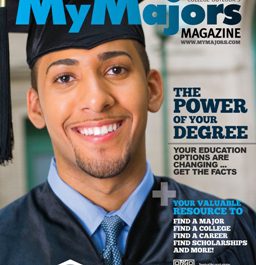By Howard Freedman
President of Financial Aid Consulting
www.financialaidconsulting.com

Who ever said that you need cash to pay for college?
This couldn’t be further from the truth when you consider that few families have the cash to pay for college or a house or a car or other big-ticket items. That is where the prudent use of governmental credit programs, scholarship and grant searches and debt relief programs provide painless remedies to defray college expenses.
Two of the biggest stresses for families are money and majors. The two issues can run in tandem. Be willing to see preparing for college as a part-time job. Be diligent with paperwork and time management. Remember deadlines are key, especially when seeking financial help.
Sadly, many families give up or go on a guilt trip when they are confronted with the fact that they did not or could not save for college. What they fail to realize is that there are many other unique financial resources that are only available to college bound students. These resources are not based on a family’s credit scores but focus on the student and their futures rather than on the parent’s financial history.
It all starts with the FAFSA (Free Application for Federal Student Aid), a form required by all colleges for federal financial aid. Fill it out early starting January 1 of each year based on estimates that can be adjusted later.
The power of the FAFSA is in the results known as EFC or Expected Family Contribution. The EFC is derived from detailed calculations based on a family’s income or certain assets. It defines the amount that a family should be but may not be able to contribute to the cost of a student’s education. The college subtracts the EFC from the cost of attending a college to derive the amount of unmet financial need that the college will try to satisfy.
But what happens if a family does not have their Expected Family Contribution despite what the numbers indicate?
Families with Adjusted Gross Incomes of $32,000 or less may qualify for an Automatic Zero EFC if certain criteria are satisfied. Families participating in means tested federal benefit programs {SSI, Food Stamps, Free and Reduced Price School Lunch program, Temporary Assistance for Needy Families (TANF) or Women, Infants and Children (WIC)} or filing a 2011 IRS form 1040A or 1040 EZ or IRS form 1040 but are not required to do so to be eligible. This also applies if the student’s parent is a dislocated worker. The Automatic Zero EFC defines the student as being the most needy and eligible to receive the most grants, subsidized and low cost loans and work study.
Other families may qualify for the Simplified Needs Test. The benefit of this test is that only income and not assets are used to calculate EFC. Adjusted Gross Income of $49,999 or less in addition to similar criteria as the Automatic Zero EFC calculations qualifies the student to have a lower EFC that are not impacted by normally reported asset values.
Families with EFCs exceeding these thresholds should be prepared to notify the financial office and, if necessary, appeal a financial aid award based on information not reported or requiring further explanation. Colleges use a processed known as PJ or Professional Judgment to adjust the EFC if circumstances warrant.
Stafford Loans — A student receives a $5,500 Stafford loan by completing a FAFSA. Part of the loan can be subsidized (Uncle Sam pays the interest while in college) with the other part being unsubsidized (interest accumulates). The beauty of this loan is that it is not based on a parent’s credit. Fixed amount, income based and graduated repayments options are deferred until 6 months after graduation. Stafford loans increase to $6,500 for the student’s sophomore year, and $7,500 per year for the junior and senior years.
Perkins Loans — These subsidized loans have a 5 percent interest with repayments beginning 9 months after graduation. These are normally granted to the families with the lowest EFCs.
Parent PLUS Loans — These loans are available for parents to pay any remaining balance. This loan, however, is based on a parent’s credit. When parents are denied a PLUS loan, the student can receive an additional $4,000 in unsubsidized Stafford loans their freshman and sophomore years. This amount increases to $5,000 for their junior and senior years.
Federal Pell Grants — The grants offer up to $5,500 per year to families earning less than $30,000 per year. The maximum grant and earnings threshold administered by the federal government is more than $5,550 but could change due to impending federal legislation.
Federal SEOG (Supplemental Educational Grants) — These grants are administered by the college and not the federal government. Grants range from between $100 to $4,000 per student per year.
Work Study — This part-time employment helps finance the cost of the college education. Employment may be at the institution or outside organizations. Work study is assigned as part of the financial aid package.
Scholarships — They are available to those who take the time to explore them rather than letting them just happen. They are not all based on scholastic merit but can include, family backgrounds, affiliations, athletics, ethnicity, major, corporate sponsorship, skills, community service and so on. Scholarship searches can be as easy as using key words to explore the Internet, checking on reputable free scholarship search sites or just by asking about local or college specific scholarships for which you are interested.
Loan Forgiveness Programs — The federal government offers loan forgiveness for teaching, public service jobs and more. Check http://studentaid.ed.gov for further information.
Finally consider the military, AmeriCorps, Vista, Peace Corps and other options are ways of earning scholarships and educational assistance while learning about the world.
Now that you understand why you don’t need the cash in hand to go to college, now is your time to go for it!



